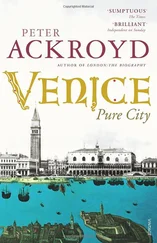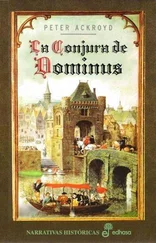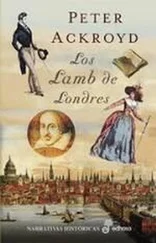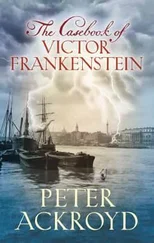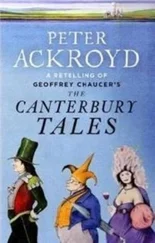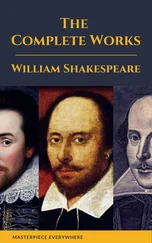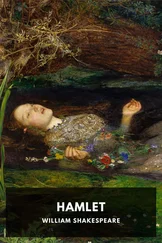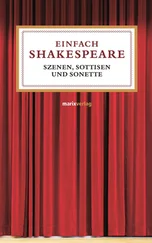Peter Ackroyd - Shakespeare
Здесь есть возможность читать онлайн «Peter Ackroyd - Shakespeare» весь текст электронной книги совершенно бесплатно (целиком полную версию без сокращений). В некоторых случаях можно слушать аудио, скачать через торрент в формате fb2 и присутствует краткое содержание. Год выпуска: 2005, ISBN: 2005, Жанр: Биографии и Мемуары, на английском языке. Описание произведения, (предисловие) а так же отзывы посетителей доступны на портале библиотеки ЛибКат.
- Название:Shakespeare
- Автор:
- Жанр:
- Год:2005
- ISBN:978-0-307-49082-7
- Рейтинг книги:5 / 5. Голосов: 1
-
Избранное:Добавить в избранное
- Отзывы:
-
Ваша оценка:
- 100
- 1
- 2
- 3
- 4
- 5
Shakespeare: краткое содержание, описание и аннотация
Предлагаем к чтению аннотацию, описание, краткое содержание или предисловие (зависит от того, что написал сам автор книги «Shakespeare»). Если вы не нашли необходимую информацию о книге — напишите в комментариях, мы постараемся отыскать её.
Shakespeare — читать онлайн бесплатно полную книгу (весь текст) целиком
Ниже представлен текст книги, разбитый по страницам. Система сохранения места последней прочитанной страницы, позволяет с удобством читать онлайн бесплатно книгу «Shakespeare», без необходимости каждый раз заново искать на чём Вы остановились. Поставьте закладку, и сможете в любой момент перейти на страницу, на которой закончили чтение.
Интервал:
Закладка:
So Stratford contained a very large Catholic constituency of which the Shakespeares were a part. This does not necessarily imply that Shakespeare himself professed that faith — assuming that he professed any — only that he found the company of Catholics familiar. It seems in certain respects to have been a clannish society. The family of Nicholas Lane, a Catholic landowner who lent money both to John and to Henry Shakespeare, bought their clothes from a Catholic tailor in Wood Street. 3In the same context, therefore, it also seems likely that affluent Catholics preferred to lend money to their coreligionists. In later years Shakespeare purchased his great house from a Catholic, William Underhill, who was compelled to sell as a result of the vast sums of money he had expended on recusancy fines. We may see in Shakespeare’s purchase a mixture of shrewd commercial calculation and semi-fraternal sympathy.
On any conservative reckoning it is possible to identify some thirty Catholic families within the town, and of course the available records are by their nature incomplete and inconclusive. There would have been many more papists, who concealed their private beliefs from the local authorities. They became, in the language of the day, “church papists” whose attendance at the Protestant churches masked their true faith. It has been speculated that the majority of churchgoers in Stratford were of this sort.
The religious situation in Stratford was in any case well known. Hugh Larimer, the reformer and Bishop of Worcester, declared that Stratford lay at “the blind end” of his diocese, and one of Latimer’s colleagues confirmed that in Warwickshire “great Parishes and market Townes [are] utterly destitute of God’s word.” 4One of his successors, John Whitgift, complained in 1577 that in the area around Stratford he could obtain no information on recusants; in a tolerant and like-minded community, neighbour would not denounce neighbour. The papistical images in the guild chapel were lime-washed, on the orders of John Shakespeare, more than four years after a royal injunction had ordered their removal. It only finally occurred after the leading Catholic family in the town, the Cloptons, had fled abroad for safety. In any case the lime-washing of the offending images was hardly in direct obedience with the administrative injunction to “utterly extinct and destroy” such images so that “there remains no memory of the same.” John Shakespeare merely covered them over, perhaps in the hope of better days.
Lying concealed upon the walls of the chapel were depictions of two local Saxon saints, Edmund and Modwena, for those who wished to celebrate the blessedness of their region; there was a fresco of the martyrdom of Thomas Becket, while kneeling at the altar of St. Benedict in Canterbury; there was a painting of St. George in mortal combat with the dragon, a princess standing behind him. Here also were images of angels and of devils, saints and dragons, monarchs and armed men in battle. Here in this Stratford chapel were hidden the images of the Catholic world. We will see some of them freshly revealed within Shakespeare’s plays.
Certain of Shakespeare’s schoolteachers were Catholic. If John Shakespeare had indeed espoused Catholicism, his example shows there was no hindrance to high office in the town, which in turn suggests a measure of quiescence or even sympathy among its leading citizens. But it represented a fragile compromise. External legislation, and the presence of religious commissioners, could create tensions within the community. Overtly partisan steps, like the concealment of renegade priests, could cause serious problems for those concerned. And in any case the general drift of the time was towards a grudging acceptance of the new religion and the steady abandonment of the practices of the old faith. By the early seventeenth century Stratford had become notably more Protestant in tendency. The town was never ruled by “precise fools” or “Scripture men,” as the more formidable Puritans were known, but it eventually came to accept the ambiguous orthodoxy of the Church of England. Yet in the latter half of the sixteenth century, despite royal injunctions and local purges, fines and sequestrations and imprisonments, the persistence of the Catholic faith in the town can clearly be seen.
This might have had a direct effect upon the Shakespeare household in one important sense. The dislike of the reformed religion meant that piety was transferred from the Church to the family. The children might now be obliged to attend the new forms of worship and listen to Elizabethan homilies. But the lessons of the old faith, and the rites of the once popular religion, might still be taught and practised in the home. It was the place of safety. Since Shakespeare’s eldest daughter, Susannah, remained a firm and prominent Catholic all of her life, can it be assumed that the Shakespeares themselves retained this familial tradition of inherited piety? It has been inferred that the community of Catholics was matriarchal in tendency, and that the woman’s “inferior legal and public identity afforded her a superior devotional status, a fuller membership of the Catholic Church.” 5Since the old faith is likely to have been transmitted through the women of the household, it throws an interesting light upon Shakespeare’s attitude towards his closest female relations.
CHAPTER 8
I Am a Kind of Burre, I Shal Sticke
There are some human, beliefs that lie below the level of professed faith and orthodoxy. As a child Shakespeare learned of the witches who created storms and of the Welsh fairies who hid in foxgloves. “Queene Mab” of Romeo and Juliet is derived from the Celtic word, mab , meaning infant or little one. There is a Warwickshire term, “mab-led,” signifying madness. Shakespeare knew of the toad with the medicinal jewel in its head, and of the man in the moon who carried a bundle of thorns. In the Forest of Arden, as his mother might have told him, there were ghosts and goblins. “A sad Tale’s best for Winter,” says the unfortunate child Mamillius in The Winter’s Tale , “I haue one of Sprights and Goblins” (538-9). All his life Shakespeare had a very English sense of the supernatural and the marvellous, a predilection that goes hand in hand with a taste for horror and sensationalism in all of its forms. He brings ghosts into the history plays, and witches into Macbeth . The plots of the fairy stories can be glimpsed in his adult drama. Pericles is one of the old tales told round the hearth. In similar fashion ballads and folk tales charge the plot of The Taming of the Shrew . They were part of his Stratford inheritance.
The zealots of the reformed Church were not well disposed towards such idolatrous relics as maypoles and church ales, but local observances survived their displeasure. The bells rang out on Shrove Tuesday, and on the feast of St. Valentine the boys sang for apples; on Good Friday the labourers planted their potatoes and on the morning of Easter Day the young men went out to hunt hares. There were “whitsun lords” in Warwickshire as late as 1580, together with all the panoply of mumming and morris-dancing. The pageant of St. George and the Dragon, for example, was performed on the streets of Stratford every year. Shakespeare saw the sheep-shearing feasts at Snitterfield, and resurrected one of them in The Winter’s Tale . The May-games of his youth return in A Midsummer Night’s Dream . This is not some saga of “merry England,” but the very fabric of life in a conservative and ritualised society immediately before the permanent changes induced by the reformation of religion.
The stray details of that enduring life emerge in a hundred different contexts. Real names of places and of people are enlisted in Shakespeare’s drama. His aunt lived in the hamlet of Barton-on-the-Heath, and it rises again as Burton-Heath in The Taming of the Shrew; Wilmcote becomes Win-cot. The names of William Fluellen and George Bardolph are found in a list of Stratford recusants, beside that of John Shakespeare. His father also engaged in business with two wool-dealers, George Vizer of Woodmancote (locally pronounced Woncote) and Perkes of Stinchcombe Hill, and they reappear in a line from Henry IV, Part Two . “I beseech you sir to countenance William Visor of Woncote against Clement Perkes a’ th hill” (2725-6). In the play Visor is described as an “arrant knave,” which may suggest some familial dispute with him.
Читать дальшеИнтервал:
Закладка:
Похожие книги на «Shakespeare»
Представляем Вашему вниманию похожие книги на «Shakespeare» списком для выбора. Мы отобрали схожую по названию и смыслу литературу в надежде предоставить читателям больше вариантов отыскать новые, интересные, ещё непрочитанные произведения.
Обсуждение, отзывы о книге «Shakespeare» и просто собственные мнения читателей. Оставьте ваши комментарии, напишите, что Вы думаете о произведении, его смысле или главных героях. Укажите что конкретно понравилось, а что нет, и почему Вы так считаете.



